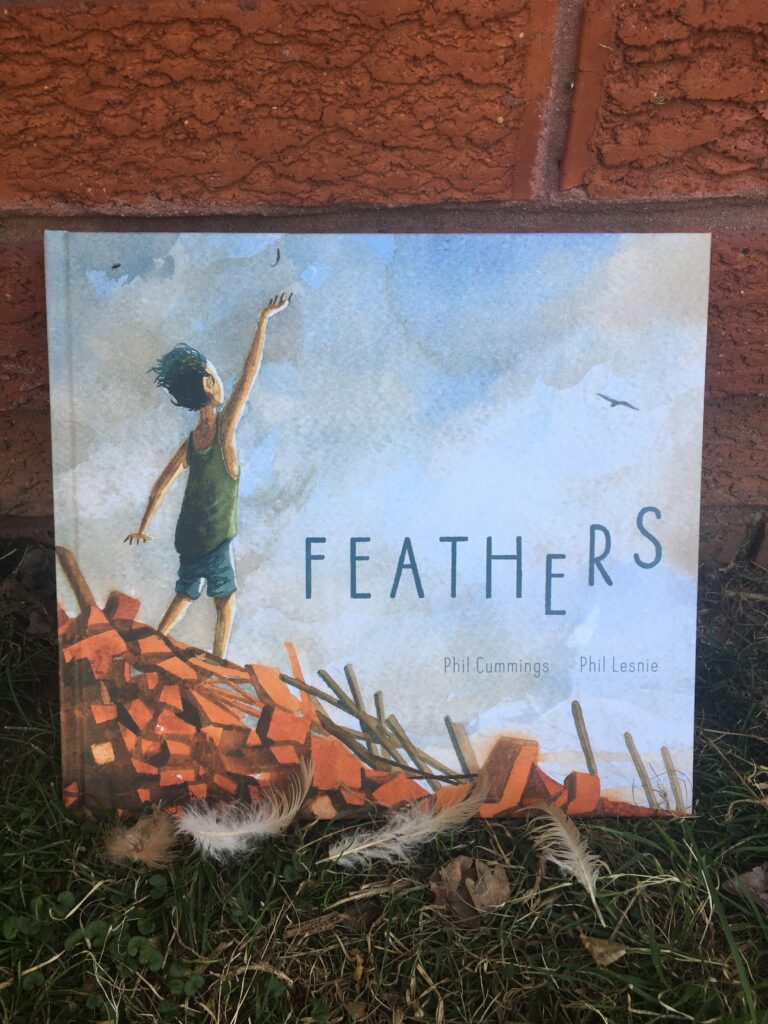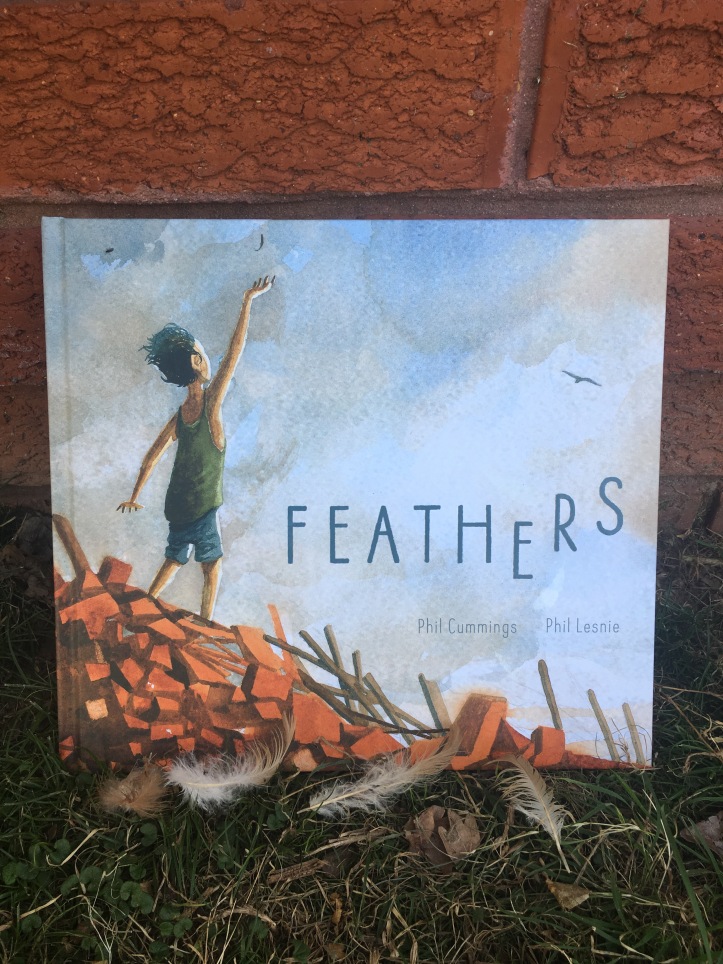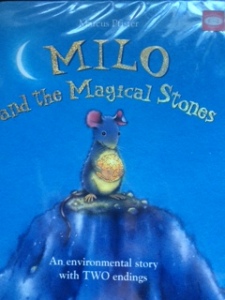The sun rose on a crisp, cloudy day. The sandpiper stretched its wings in the chilling breeze. It knew it was time to leave so it took flight.
Feathers by Phil Cummings and Phil Lesnie is a calming yet thought provoking picture book that takes the reader on a journey over lands filled with hope, fear, sadness and joy. As we follow the yearly migratory flight of the sandpiper we see the countries that play an important role in its survival. We watch the bird as it soars over snowy landscapes, lands near flood waters and finds safety amongst reeds in the water.
Feathers raises many issues but a big one is the time to reflect on how lucky we are to live in Australia. The countries that the sandpiper flies over on it’s yearly flight have been hit hard by earthquake (China) Civil unrest (Myanmar) Flooding (Cambodia) but its final resting place is in Australia – safe and disaster free.
Feathers has so much to offer – it is a worrying yet heart warming read and one which should trigger some deep conversations about how we can help those who are less fortunate than us.
It is a story about annual bird migration – which may not seem so important but it is. The numbers of many of these migratory birds are dropping drastically because of loss of habitat.
These birds need to land in different places all over the world – see the East Asian-Australasian Flyway map – and if they dont, eggs will not hatch or if they do hatch, the chick may not be fully developed, chicks may get eaten by feral animals or not have enough food to eat to survive the long flight back to Australia.
Phil Lesnie’s illustrations bring so much emotion to the story through the ever changing light in the sky – we can feel the pain of the people escaping war, the worry of the people surrounded by flood and the fear of those whose houses have fallen down. We can see the strength of the sandpiper as it flies on it’s pathway seeking out food, shelter and then home.
Feathers is a poignant read that focuses on human destruction of the world we live in. Read this story with your class or children at home. Take the time to think about how you can make a difference in the world we live in – so that war is eliminated and habitat is saved.
So what can you do after you have read this book?
Join my Facebook page and group: educateempower11 or closed group for teaching ideas : growing globally and socially conscious children. https://m.facebook.com/groups/362368594250457
Sustainability
- Why do these birds need to migrate?
- Find out about which birds migrate each year.
- Read Jeannie Baker’s book – Circle to learn more about the migration of the Godwit.
- How is Australia causing issues for migratory birds? Can you write a letter to the local government to discuss this and urge them to stop the destruction of habitat?
Human Rights
- What does safety mean to you? Where did you feel safe in the story?
- Why does Mia feel lucky?
- How can we help those who have been affected by floods, earthquakes and war? Are all these acts purely natural disasters or have humans played a role in exacerbating the situation?
- Explore the UN’s rights of the child. Would all the children in this story have their rights?
Literacy
- Explore the feather – what does it look like, feel like and sound like? Explore the bird – look, feel, sound and then explore the landscape. Use adjectives, adverbs and verbs to explore these nouns.
- Choose another migratory bird and write a story about where they travel and what they might see.
Geography
- Find the East Asian-Australasian Flyway and plot where the sandpiper went. Find some other birds that follow this pathway. (http://www.swifft.net.au/cb_pages/video_conference_notes_30_april_2015_-_migrations.php)
Here are some great articles to read about the demise of the migratory bird:
http://www.australiangeographic.com.au/topics/wildlife/2017/05/migratory-shorebirds
http://birdlife.org.au/documents/Shorebirds-FactSheet.pdf
http://www.environment.gov.au/biodiversity/migratory-species/migratory-birds



